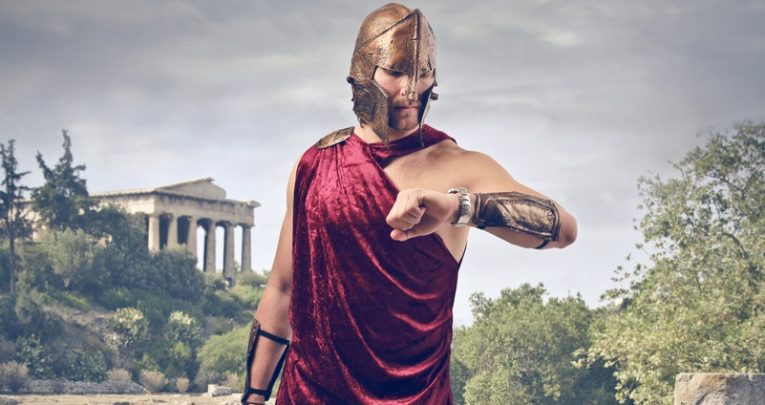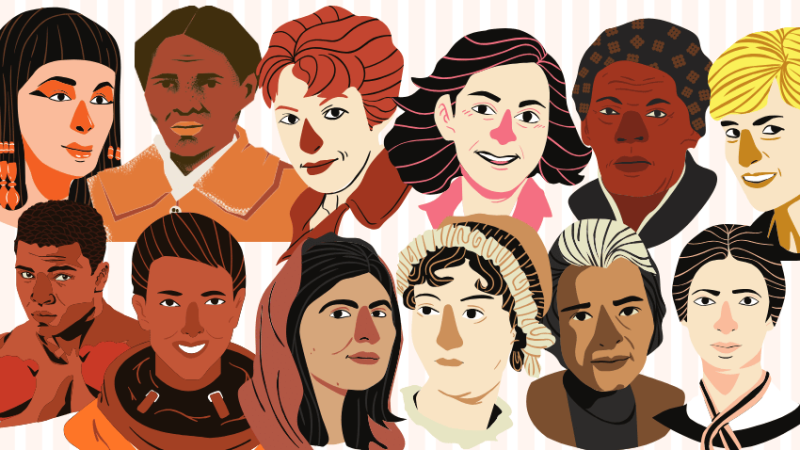You’re out of order! – Help your kids get to grips with historical chronology

If your students think dinosaurs witnessed the Big Bang, or Confucius starred in the Beijing Olympics, your timeline probably needs some work, says Bev Forrest…

- by Bev Forrest
- History specialist, former chair of Historical Association Primary Committee

Once, while visiting a school, I watched a lesson on the Roman invasion of Britain where the teacher made numerous references to the events having happened ‘a long, long time ago’. When she did, the pupils kept looking over at me, and I worried for a moment that they thought I was an Ancient Roman.
I soon realised, however, that behind me were a few sheets of laminated A4 that formed the class timeline.
The sheet covering Roman Britain was sandwiched between the dinosaurs and the Tudors. How was this actually helping them? Important features like duration, interval and sense of period were being ignored. To make matters worse, it was decorated with stereotypical images taken from the internet, such as a Fred Flintstone-like caveman getting ready to fight off a passing Tyrannosaurus rex. As a visual representation, timelines should be an essential tool in enabling pupils to make sense of chronology. Yet when visiting schools around the country, I’ve seen many examples of timelines that are doing little to support this understanding, or worse, ones that foster misconceptions. So what does a good timeline look like? Before answering that question, you need to be very clear about what you want the timeline to do. This will vary with the age and ability of the pupils taught, so it is essential to consider progression when planning and using your timeline.
Key Stage 1
In the KS1 classroom your timelines will continue to develop the understanding of sequence introduced in the Foundation Stage.
As part of this work, pupils will begin to look at interval and duration. Timelines should support an understanding of significance too, as children debate what to include and why.
Personal timelines are a common feature in KS1, but to develop these further, make sure they include local and national events.
Class timelines should feature key moments from all time periods studied, while also making links to the present day.
When studying significant people at KS1, remember to add them to the timeline, but also create separate detailed timelines of their lives.
It is important to remember to put each significant person’s life within a context by making links to both the local and national events happening at that time.
The same applies for significant events, such as the Great Fire of London in KS1. Add them to the timeline, but also create a separate timeline of the event itself.
Key Stage 2
Timelines for this age group need to support an understanding of ‘big picture history’. Parallel timelines should be used to place people and events in a broader historical context. This means that the timeline for the topic taught will run alongside others that illustrate the local and international context. For example, while studying the Anglo-Saxons, make links to what is happening in other parts of the world in that era – the Maya civilisation, for example. Looking at local place names should help you track settlement and events in your area related to the time period, which can then be featured in the timeline. At this age pupils still tend to think that one period abruptly stops and another starts, so it’s important to challenge this misconception and illustrate how time periods overlap. Pupils may be surprised to find that the early Anglo-Saxon period overlaps with the Roman era, and that much of the later stage of this 600-year period overlaps with the Vikings.
When you begin a new enquiry, always remember to place the period on a timeline within the wider historical framework of what you have previously studied – and also the present day.
In our time
Pupils should make their own personal timelines which, to support learning, could be pasted inside their history books or stuck onto the desk. Timelines should also be found around the school, possibly in the hall or along the corridor. As a class learns about a new topic they can add it to the timeline. If you want to think really big, what about the playground? Going outside the classroom provides valuable opportunities for acquiring the necessary scale, particularly when looking at ancient civilizations. Some companies now produce outdoor timelines for the playground, but be sure when considering these to look for ones that provide opportunities to add your own ideas. Towards the end of KS2, begin to experiment with different formats, rather than the usual ‘left-to-right horizontal’ style that works from past to present. Try a vertical format, which can work like an archaeological excavation going back through the years. The Dog Who Could Dig by Jonathan Long would support pupils in understanding vertical timelines and the concept of stratigraphy.
All in order
Active timelining, where pupils themselves form the timeline, is a key tool in helping them make sense of chronology. Ian Dawson’s website Thinking History contains numerous ideas to support activities and make time memorable, such as using props like hats, name cards or different-coloured tabards to denote various time periods. Timelining a particular aspect of society, such as medicine, crime and punishment, education or childhood, can help pupils gain a sense of period, and can link into your post-1066 study. For ideas on how this works, take at look at mylearning.org, which features a number of timelines relating to Marks & Spencer, including fashion, food and packaging. Returning to what a good timeline should look like, it ought to be appropriate for the age and ability of your pupils, place the period you are focusing on within a broader context, be at child height for easy reference (the best timelines are messy ones, where pupils are always adding to them) and include visuals (pupils may not remember the dates but they will remember the order of the images).
But most importantly, remember that timelines are of no use at all if they are not actually used…
Resource pointers
Need extra inspiration? Then check out these websites and publications to help you on your journey through time…
• Primary History editions 66-69 feature timeline posters that support the development of the teacher’s understanding of what is happening in different places at the same time.
• An excellent tool for creating your own timelines is Prezi. Yes, it’s a bit of a job making one from scratch, but once it’s done, it can be duplicated for a number of different classes, who can then customise their timelines with relevant images and text.
• I wouldn’t usually recommend the use of commercial timelines, but the ones made by Creativo are an exception. Its timelines can be mounted indoors or out, and as projects progress, pupils can add their own work.
Bev Forrest taught in primary and secondary schools for many years and is now a teacher trainer at Leeds Trinity University.
She is also a member of the Historical Association Primary Committee and the editorial board of the HA journal Primary History, as well as a Historical Association Quality Mark assessor.







